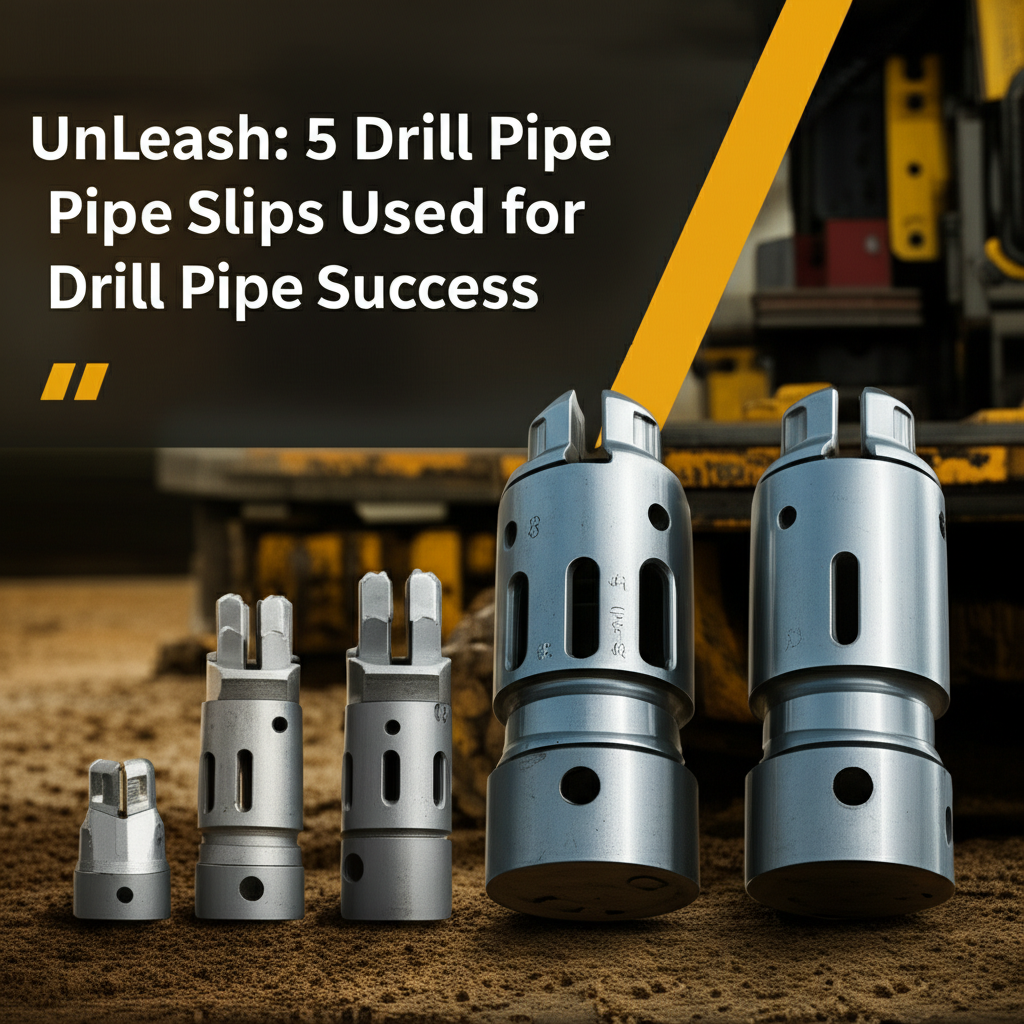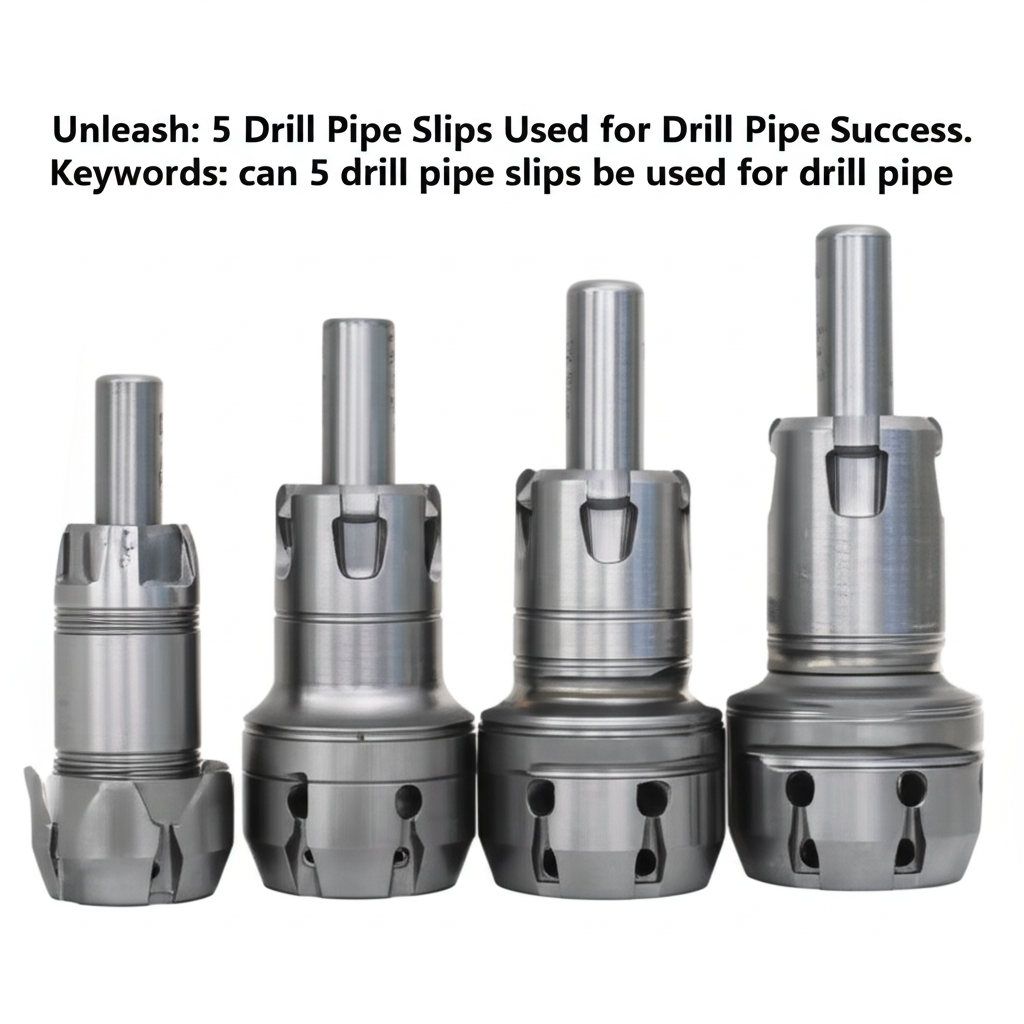Absolutely! Here’s the blog post formatted in WordPress-ready HTML, focusing on clarity, helpfulness, and SEO optimization for your target audience.
“`html
Yes, 5 types of drill pipe slips can be used for secure and efficient drill pipe handling in various drilling operations. Choosing the right slip ensures safety, prevents pipe damage, and optimizes your drilling workflow. This guide breaks down the essential slips you need to know.
Ever found yourself wrestling with drill pipe, worried about it slipping or getting damaged? It’s a common challenge, whether you’re a seasoned pro in an industrial setting or a DIY enthusiast tackling a project. Properly securing drill pipe is crucial for safety and the success of any operation. The good news is there’s a range of specialized tools designed for this very purpose. Understanding these tools, particularly drill pipe slips, can make a world of difference. Let’s explore five essential types of drill pipe slips that can help you achieve drill pipe success, keeping your operations smooth and secure.
Can 5 Drill Pipe Slips Be Used for Drill Pipe Success? Understanding Your Options
When it comes to handling drill pipe, safety and efficiency are paramount. Drill pipe slips are the unsung heroes that prevent accidents and pipe damage during various stages of drilling. But with different types available, which ones are right for your needs? The answer is, a combination of them, depending on the specific task. Let’s dive into the five key types of drill pipe slips that are essential for ensuring drill pipe success.
1. Hinged Drill Pipe Slips: The Versatile Workhorse
Hinged drill pipe slips are incredibly popular due to their ease of use and versatility. They are designed to open and close around the drill pipe, making them quick to deploy and remove. This makes them ideal for a wide range of common drilling tasks where speed and frequent adjustments are necessary.
How Hinged Slips Work

These slips typically consist of two or more segments that are hinged together. When closed, they form a secure grip around the drill pipe. The hinged design allows them to be easily placed on or removed from the pipe without needing to be completely disassembled, which is a huge time-saver on any rig or workshop floor.
When to Use Hinged Slips
- Routine Handling: Excellent for day-to-day operations like making up or breaking out drill pipe connections.
- Varying Pipe Sizes: Many hinged slips are designed to accommodate a range of drill pipe diameters, offering flexibility.
- Quick Deployment: When you need to secure the pipe rapidly and efficiently.
Pros and Cons of Hinged Slips
| Pros | Cons |
|---|---|
| Easy to use and deploy | Can be bulkier than other types |
| Versatile for different pipe sizes | May require more maintenance on hinges |
| Faster than manual slips | Can be more expensive initially |
2. Manual Drill Pipe Slips: The Classic and Reliable Choice
Manual drill pipe slips, often referred to as “cut-off” or “full” slips, are a more traditional type. They consist of a full circle of segments that are inserted and removed as a complete unit. These are known for their robust design and reliable grip, especially in situations demanding maximum security.
Understanding Manual Slips
Manual slips are typically made up of multiple segments that fit together to form a complete ring around the drill pipe. They are inserted into the drill string and then tightened, often with a screw mechanism, to provide a very firm hold. Their solid construction means they can withstand significant loads.
Ideal Applications for Manual Slips
- Heavy-Duty Operations: When holding heavy sections of pipe or when exceptional stability is required.
- Long-Term Support: Useful for situations where the pipe needs to be held securely for extended periods.
- High-Pressure Environments: Their robust design makes them suitable for high-pressure drilling applications.
Advantages and Disadvantages
| Advantages | Disadvantages |
|---|---|
| Extremely secure and reliable grip | Slower to deploy and remove |
| Durable and long-lasting | Less flexible with varying pipe sizes without specific inserts |
| Can handle very heavy loads | More difficult to install around existing pipe |
3. Overshot Slips: For Retrieval and Fishing Operations
Overshot slips are a specialized type of slip used primarily in “fishing” operations – that is, when you need to retrieve a lost or stuck piece of drill pipe or equipment from the wellbore. These slips are designed to securely grip the outside of a pipe or tool that has been dropped.
The Function of Overshot Slips
An overshot is essentially a tool with internal gripping elements, which can include slips, that are designed to fit over the outside of a damaged or separated pipe. When the overshot is lowered and engaged, its slips bite into the outer surface of the pipe, allowing it to be lifted out.
When Overshots are Essential
- Retrieving Lost Tools: If a drill bit or other tool is dropped down the hole.
- Recovering Broken Pipe: When a section of drill pipe breaks off inside the wellbore.
- Securing Tubing: Can also be used for securing various types of tubing in downhole scenarios.
Key Features of Overshot Slips
- Designed to grip the exterior of pipe.
- Crucial for wellbore intervention and fishing jobs.
- Often feature hardened steel or specialized alloys for durability.
4. Elevators and Slips: The Integrated System
While not a single type of slip, elevators and slips often work in tandem as an integrated system. Elevators are used to lift and support the entire drill string, and they often incorporate or work alongside specialized slips that hold the pipe securely within the elevator while it’s being moved.
How Elevators and Slips Cooperate
Elevators are large, mechanical devices that clamp around the drill pipe. To safely lift or lower the pipe, the elevator itself needs to be held by the rig’s derrick. Inside the elevator, or as a separate component that engages with the elevator, are slips that prevent the pipe from sliding down. These slips release when the elevator is ready to support the pipe weight directly.
Where This System Shines
- Large-Scale Drilling: Essential for handling the massive weight of long drill strings in oil and gas exploration.
- Vertical Movement: Facilitates the safe and controlled vertical movement of pipe.
- Automated Operations: Modern systems often integrate with automation for efficient pipe handling.
Benefits of Integrated Systems
- Enhanced safety through secure gripping.
- Increased operational efficiency by streamlining pipe movement.
- Reduced manual labor and risk of injury.
5. Specialty and Custom Slips: For Unique Challenges
Beyond the standard types, there are numerous specialty and custom-designed slips. These are engineered to address very specific drilling conditions, pipe materials, or operational requirements that off-the-shelf solutions might not perfectly accommodate.
Examples of Specialty Slips
- Drill Collar Slips: Specifically designed for the heavier and larger diameter drill collars.
- Line Pipe Slips: For handling the specific needs of line pipes used in pipelines.
- Slips for Corrosive Environments: Made from materials resistant to harsh chemicals or saltwater.
- Computer-Designed Slips: Tailored to exact pipe specifications for a perfect fit and maximum grip.
When Custom Solutions are Key
If you’re working with unconventional pipe sizes, materials with unusual friction coefficients, or in environments with extreme temperatures or pressures, custom slips might be the only way to ensure safe and effective handling. Consulting with manufacturers or specialized engineers is often necessary for these solutions.
Choosing the Right Drill Pipe Slip: Key Considerations
Selecting the appropriate drill pipe slip is critical for operational success and safety. Several factors should guide your decision:
- Pipe Diameter and Weight: Ensure the slips are rated for the specific diameter and weight of the drill pipe you are handling.
- Operational Environment: Consider factors like temperature, pressure, and the presence of corrosive substances.
- Frequency of Use: For frequent operations, hinged or automated slips might offer better efficiency.
- Required Grip Strength: Heavy-duty tasks demand slips with superior holding power.
- Safety Regulations: Always comply with industry standards and regulations, such as those set by the American Petroleum Institute (API).
Maintaining Your Drill Pipe Slips for Longevity
Proper maintenance is key to ensuring your drill pipe slips perform reliably and last longer. Here are some essential tips:
- Regular Cleaning: Remove dirt, grease, and debris after each use.
- Inspect for Wear: Check the gripping surfaces for any signs of wear, damage, or deformation. Replace worn segments promptly.
- Lubrication: Lightly lubricate moving parts like hinges and screw mechanisms to prevent seizing.
- Proper Storage: Store slips in a dry, protected area when not in use to prevent rust and damage.
- Professional Servicing: Periodically have your slips inspected and serviced by qualified technicians, especially for high-stakes operations. For more on tool maintenance, resources from organizations like the Occupational Safety and Health Administration (OSHA) often provide valuable insights into safe equipment handling and maintenance practices.
Frequently Asked Questions About Drill Pipe Slips
Common Questions About Drill Pipe Slips
Q1: What is the main purpose of drill pipe slips?
The main purpose of drill pipe slips is to securely hold drill pipe in place within the drill string, preventing it from accidentally moving or falling, especially during connections, disconnections, or when the string is not fully supported. They act as a safety device and a mechanical aid.
Q2: Are drill pipe slips interchangeable between different types of drilling rigs?
Generally, slips are designed for specific rig types and pipe sizes. While some hinged slips offer versatility, specialized slips for heavy offshore rigs or smaller, specialized drilling operations might not be interchangeable. Always check compatibility specifications.
Q3: How do I know if my drill pipe slips need replacing?
You should replace drill pipe slips if you notice significant wear on the gripping surfaces, cracks in the segments, damaged hinge mechanisms, or if they no longer provide a secure grip on the pipe. Regular inspection is key to identifying these issues.
Q4: Can I use a slip designed for one pipe size on a different size pipe?
It is generally not recommended to use slips on a pipe size they were not designed for. Using the wrong size can lead to an insecure grip, damage to the pipe, or damage to the slip itself, creating a safety hazard. Always use slips matched to your pipe specifications.
Q5: What are the risks of not using the correct drill pipe slips?
Not using the correct drill pipe slips can lead to severe accidents, including personnel injury, dropping the drill string, damaging the wellbore, and significant financial losses due to equipment damage or operational downtime. Safety and correct tool selection are paramount.
Q6: How often should drill pipe slips be inspected?
Drill pipe slips should be inspected before each use, especially in critical operations. A more thorough inspection of all components, including wear patterns and mechanical integrity, should be performed periodically, as recommended by the manufacturer or operational safety guidelines.
Q7: Are there different types of gripping elements within slips?
Yes, slips use various gripping elements. While many use hardened steel teeth or gripping surfaces designed to bite into the pipe, some might use specialized inserts or coatings to improve grip, protect the pipe, or perform better in specific environments. The design of these elements is crucial for their effectiveness.
“`
